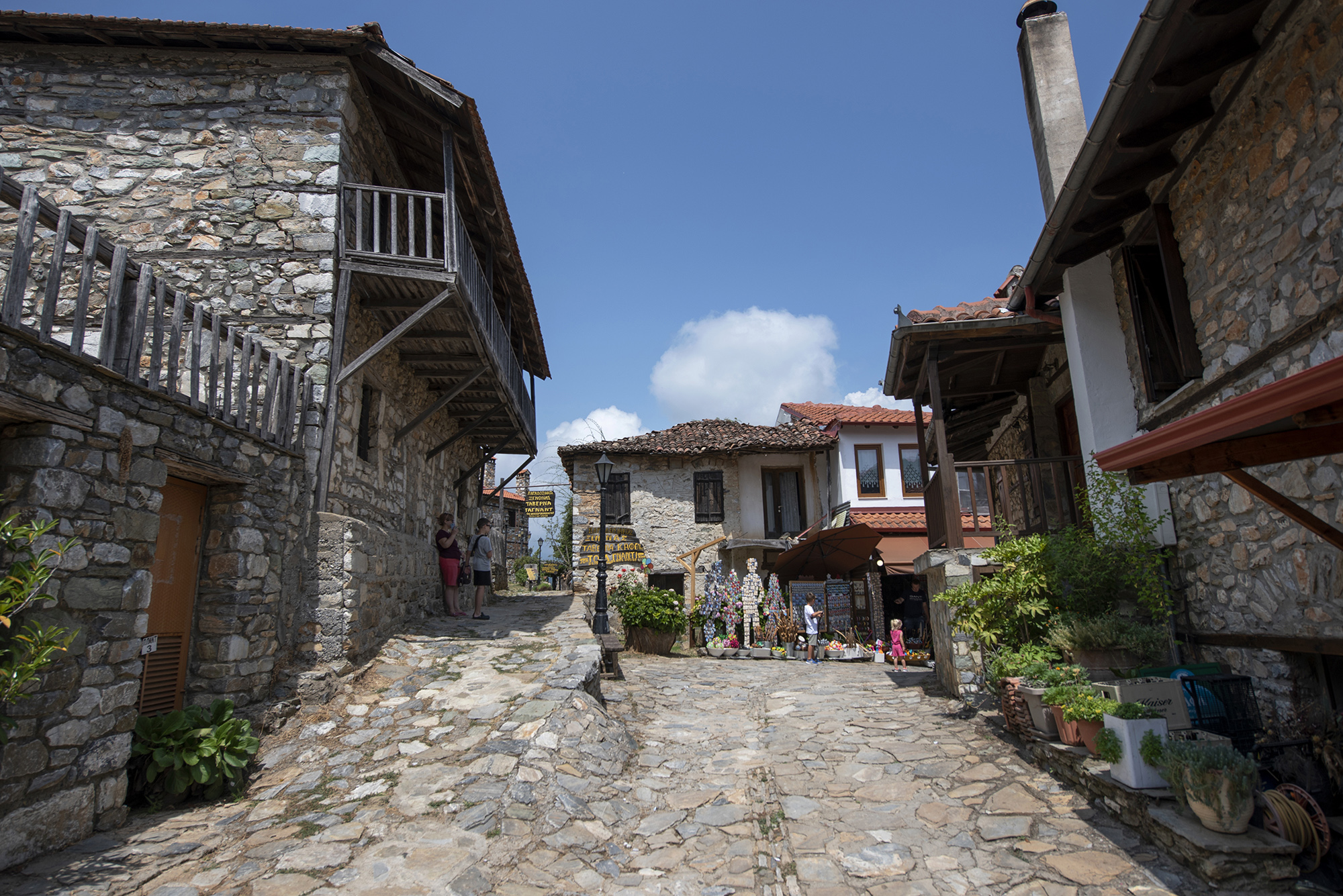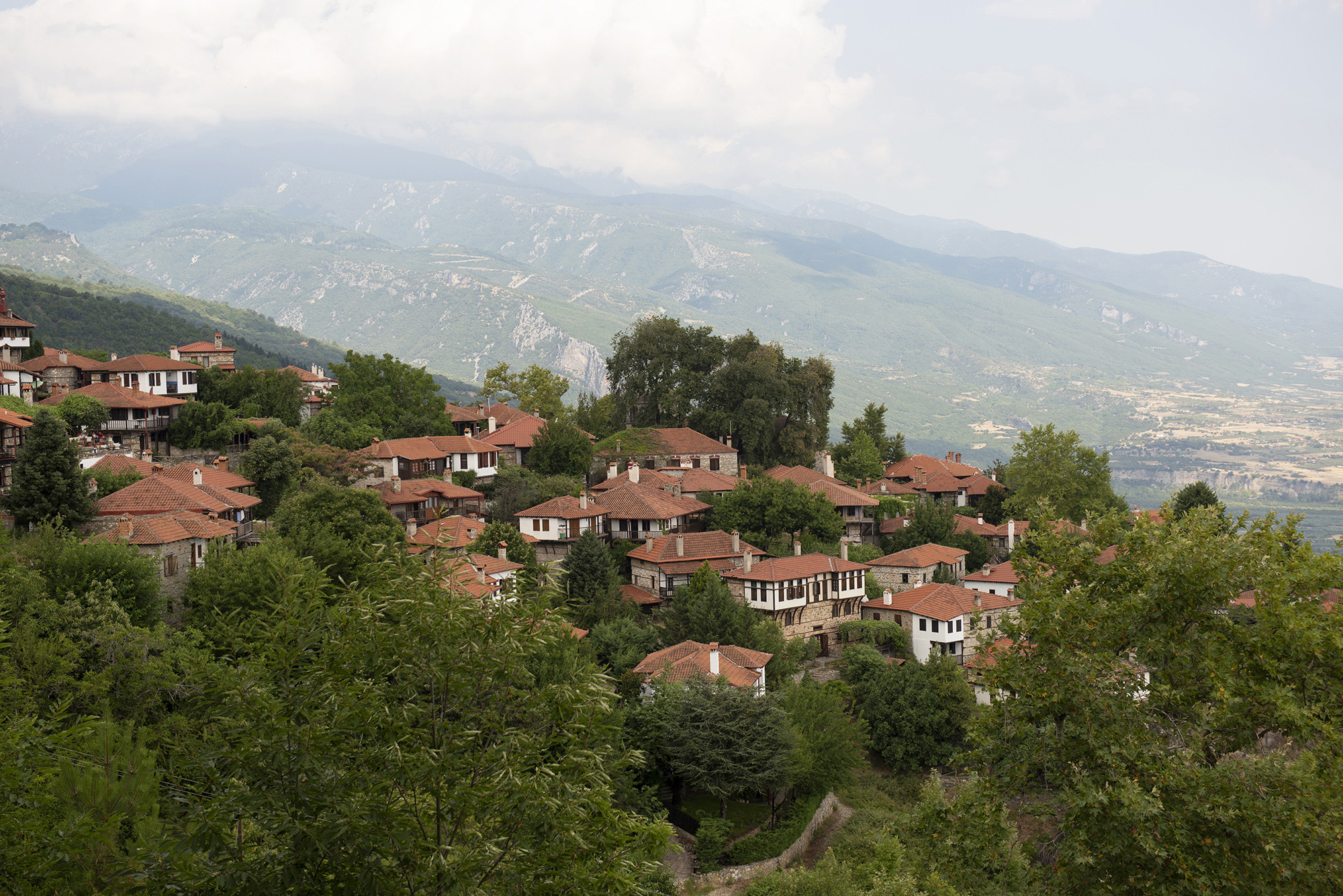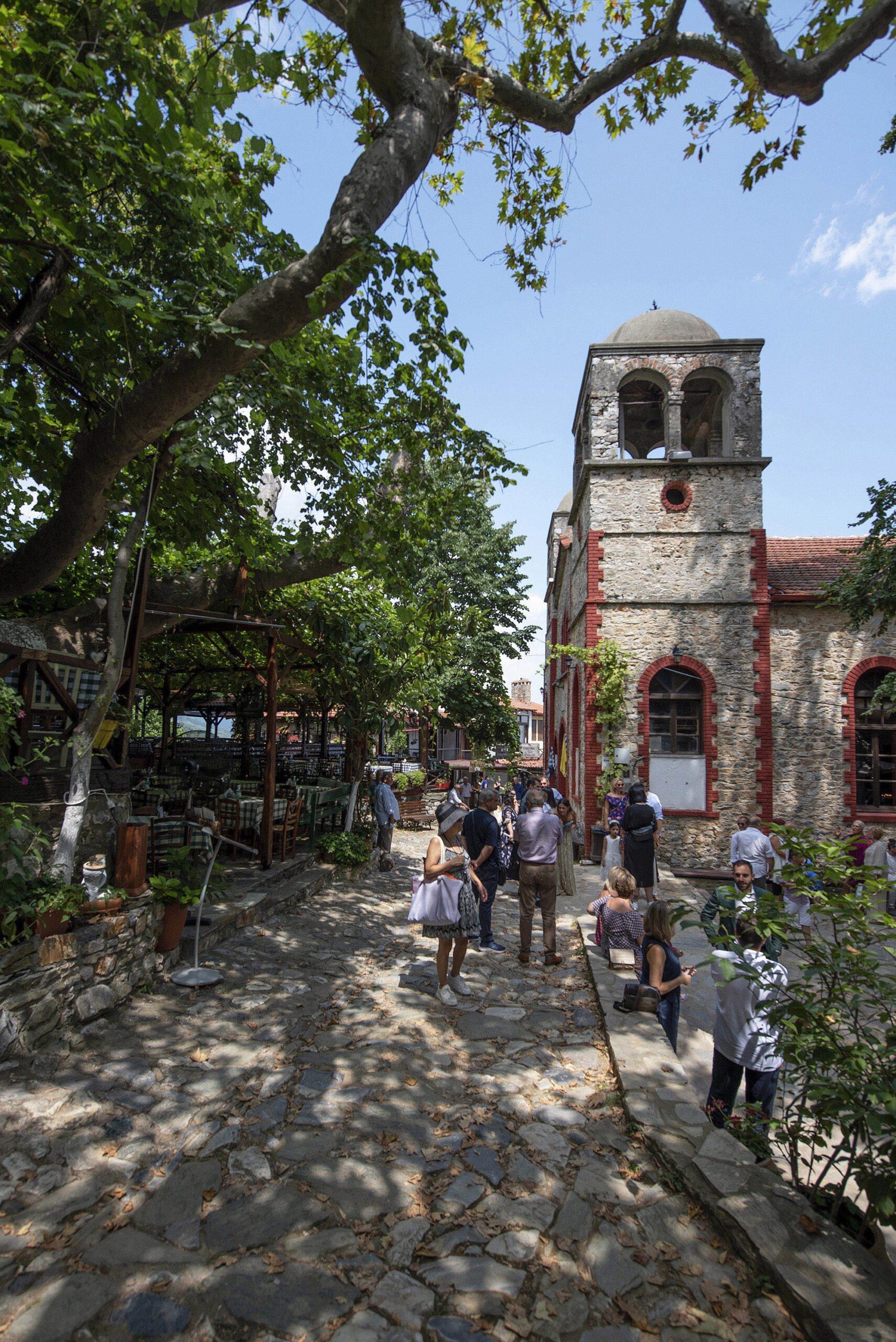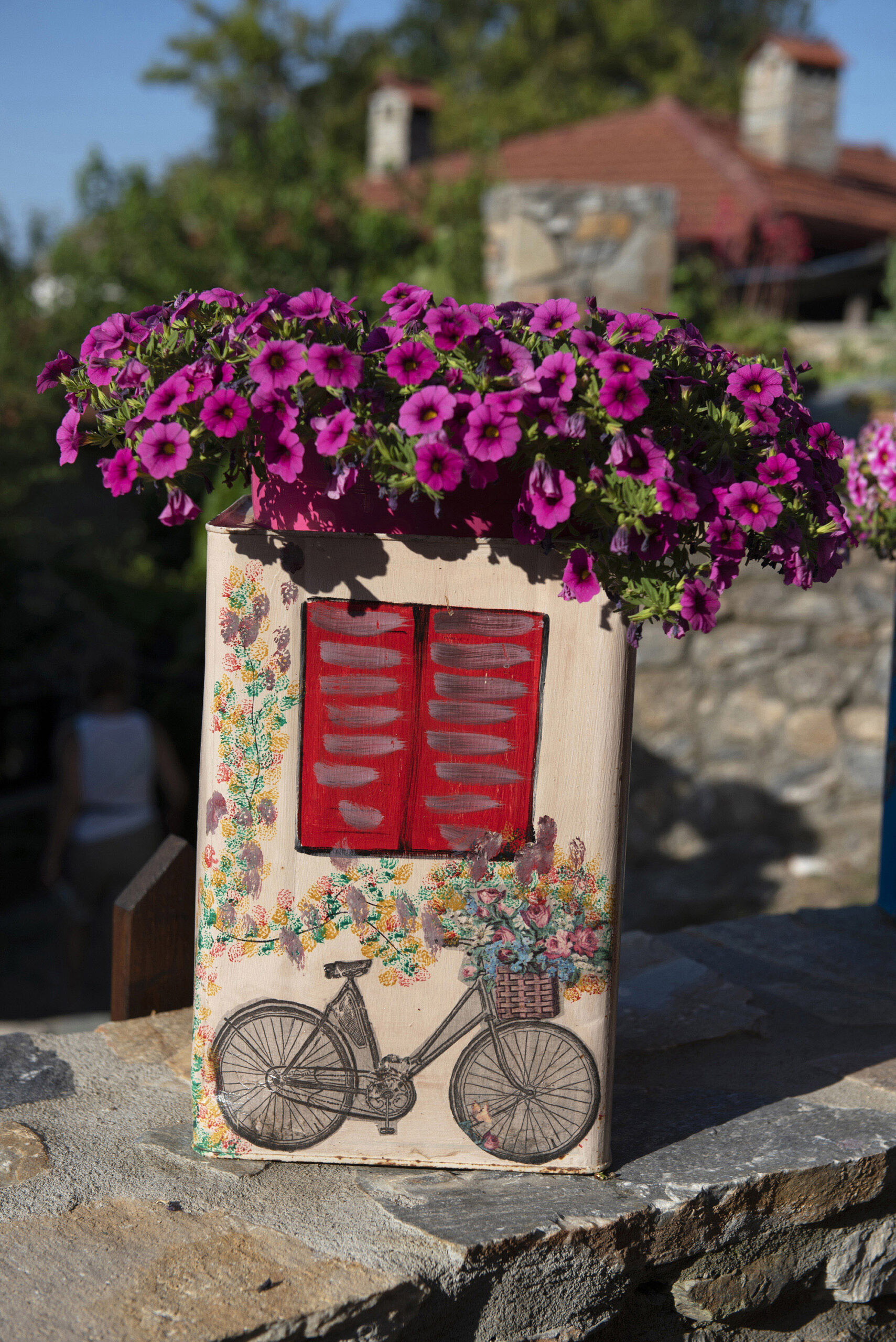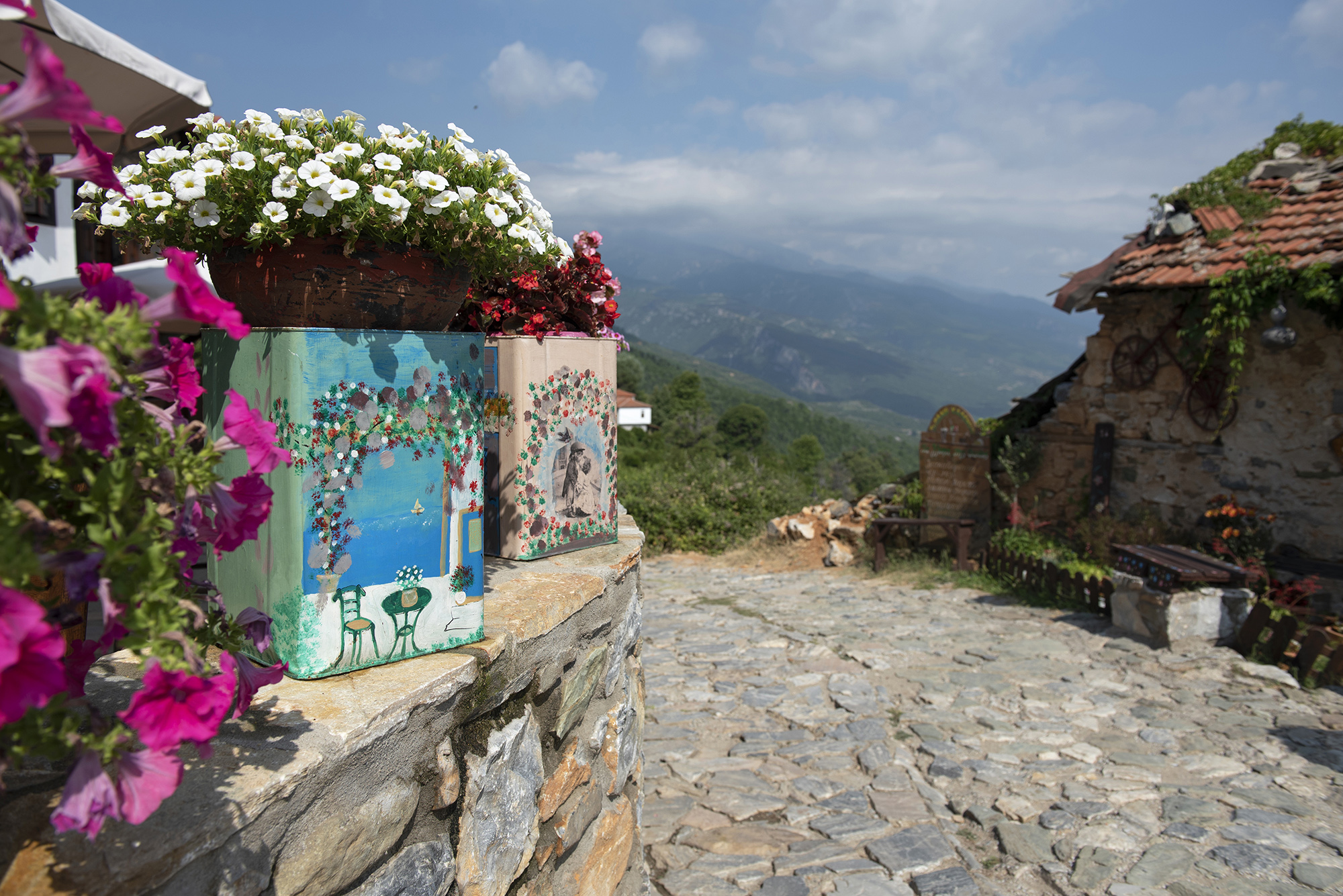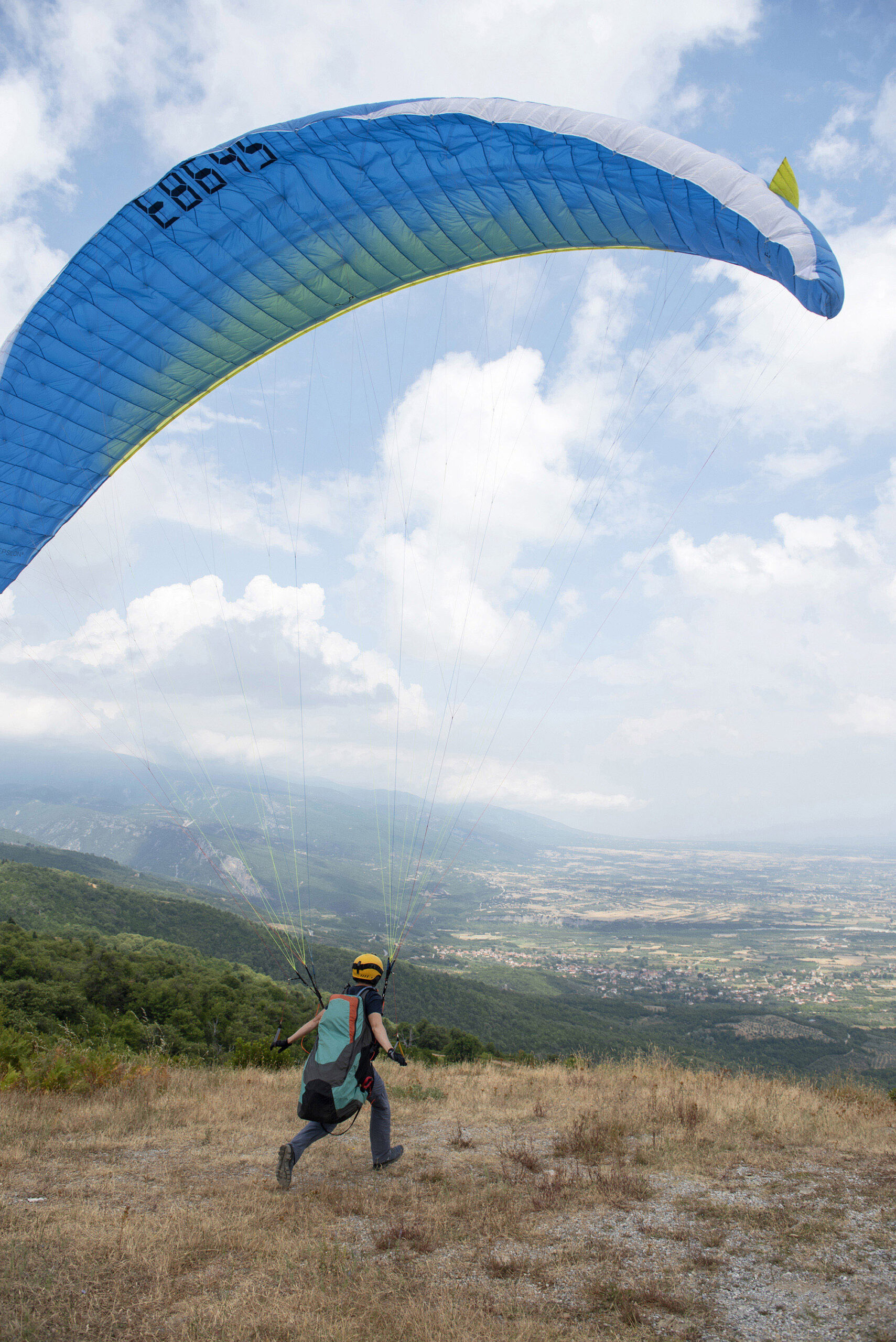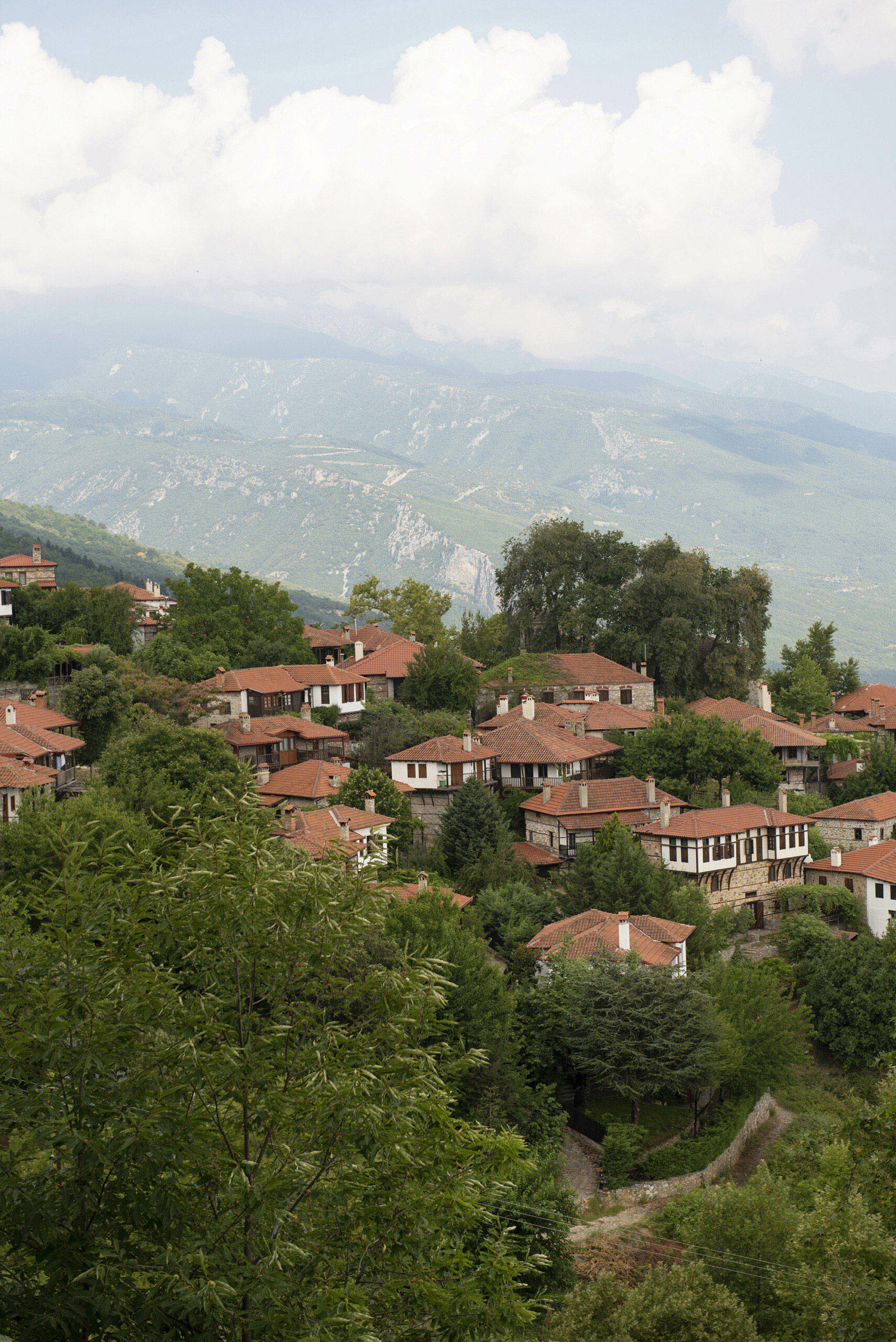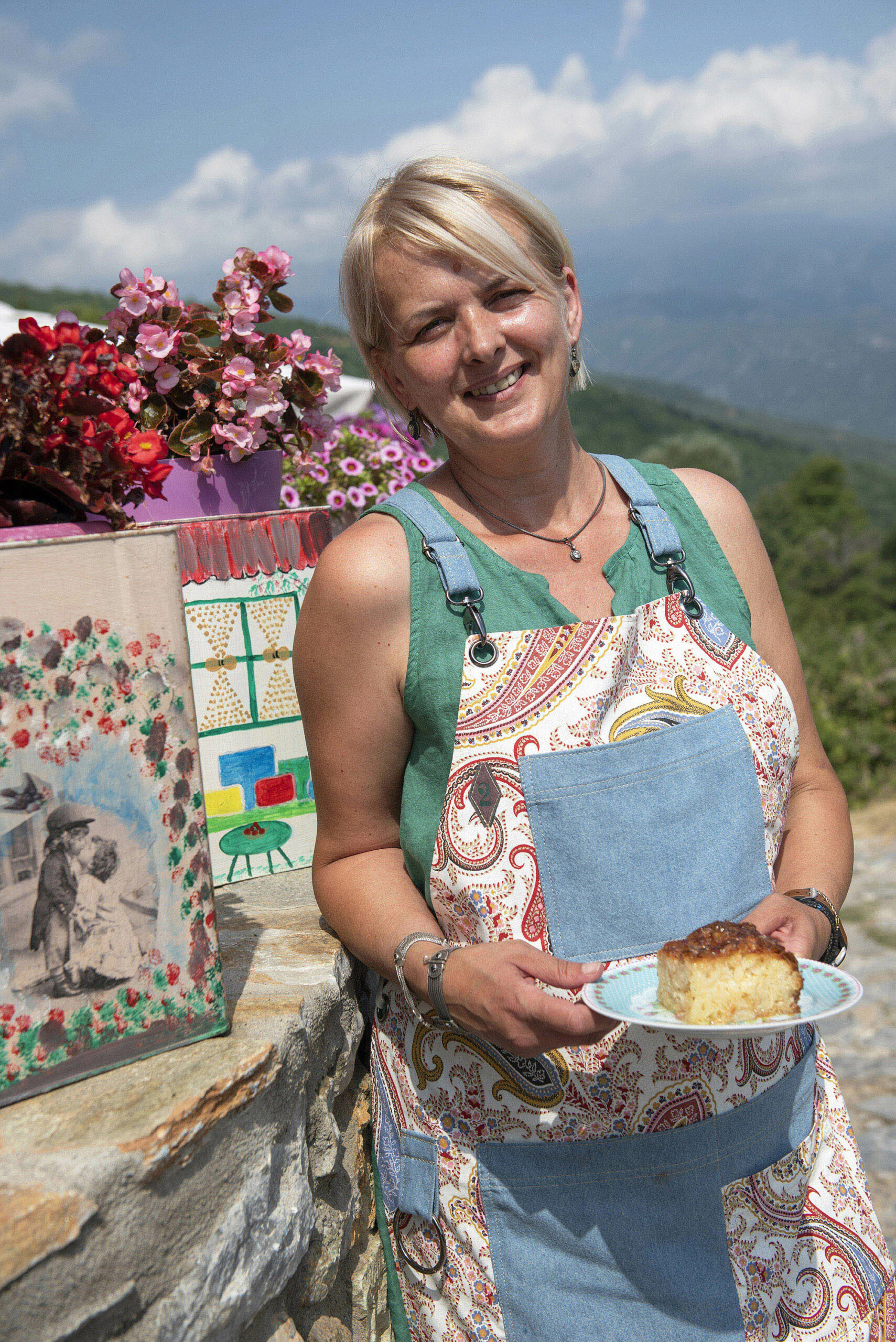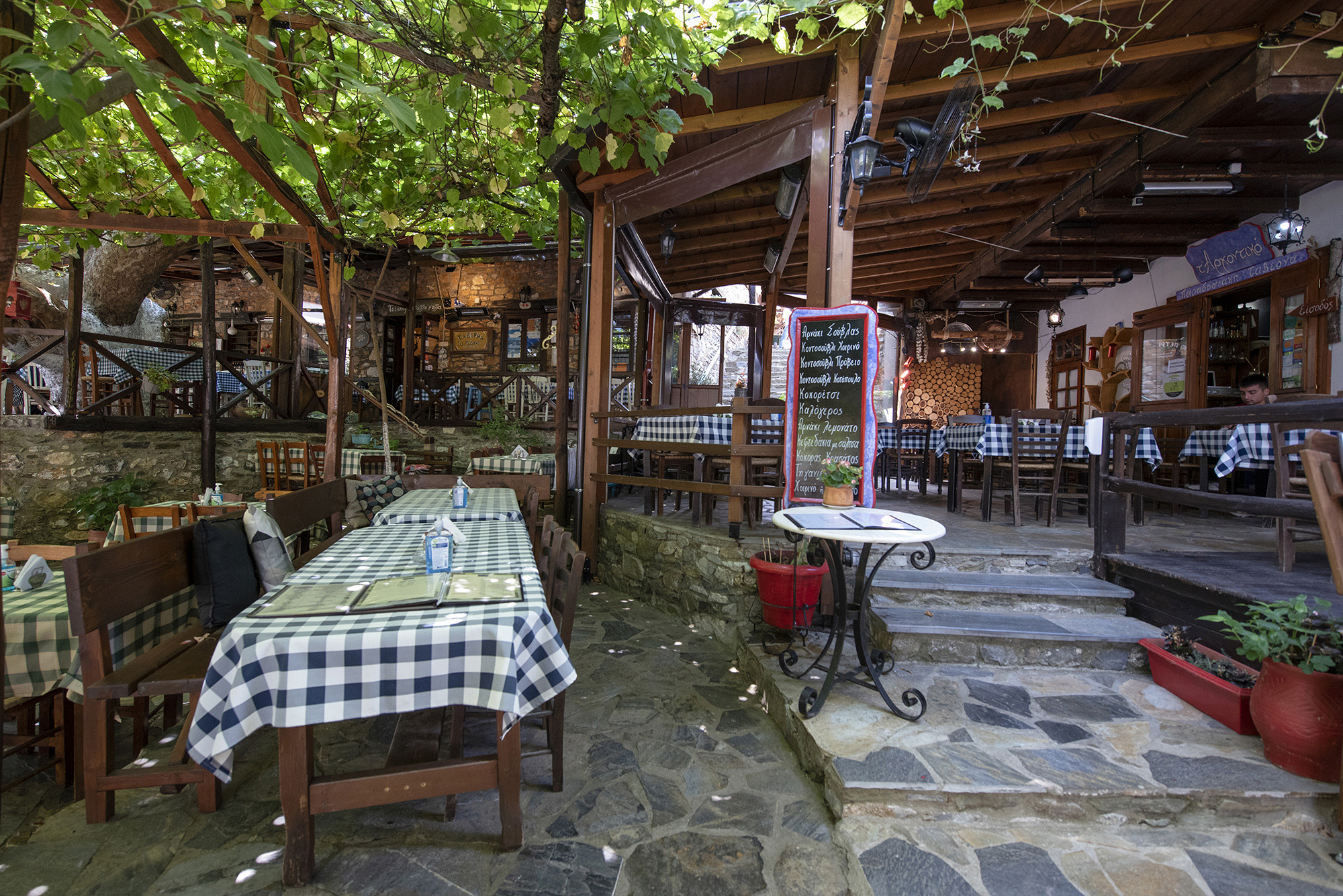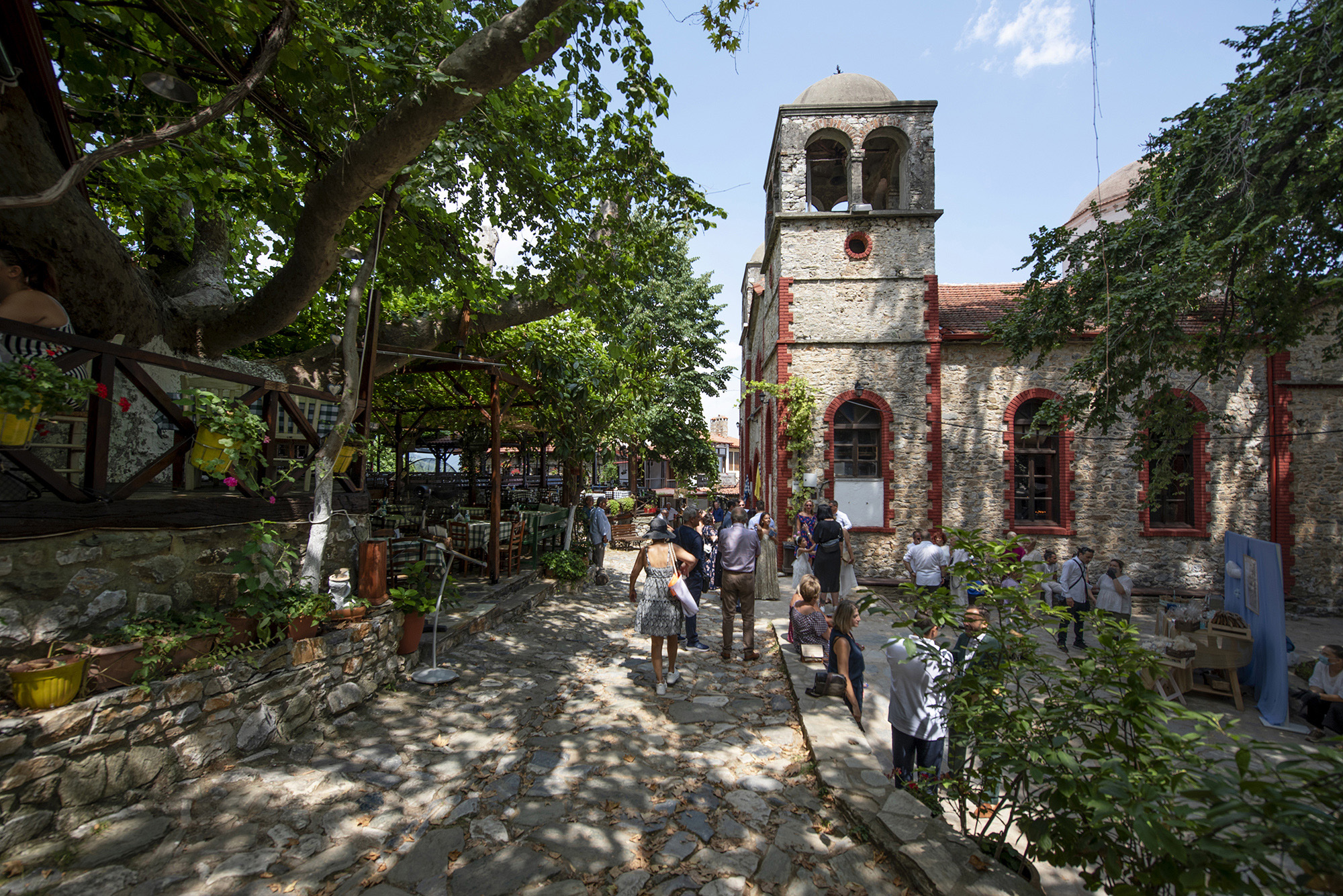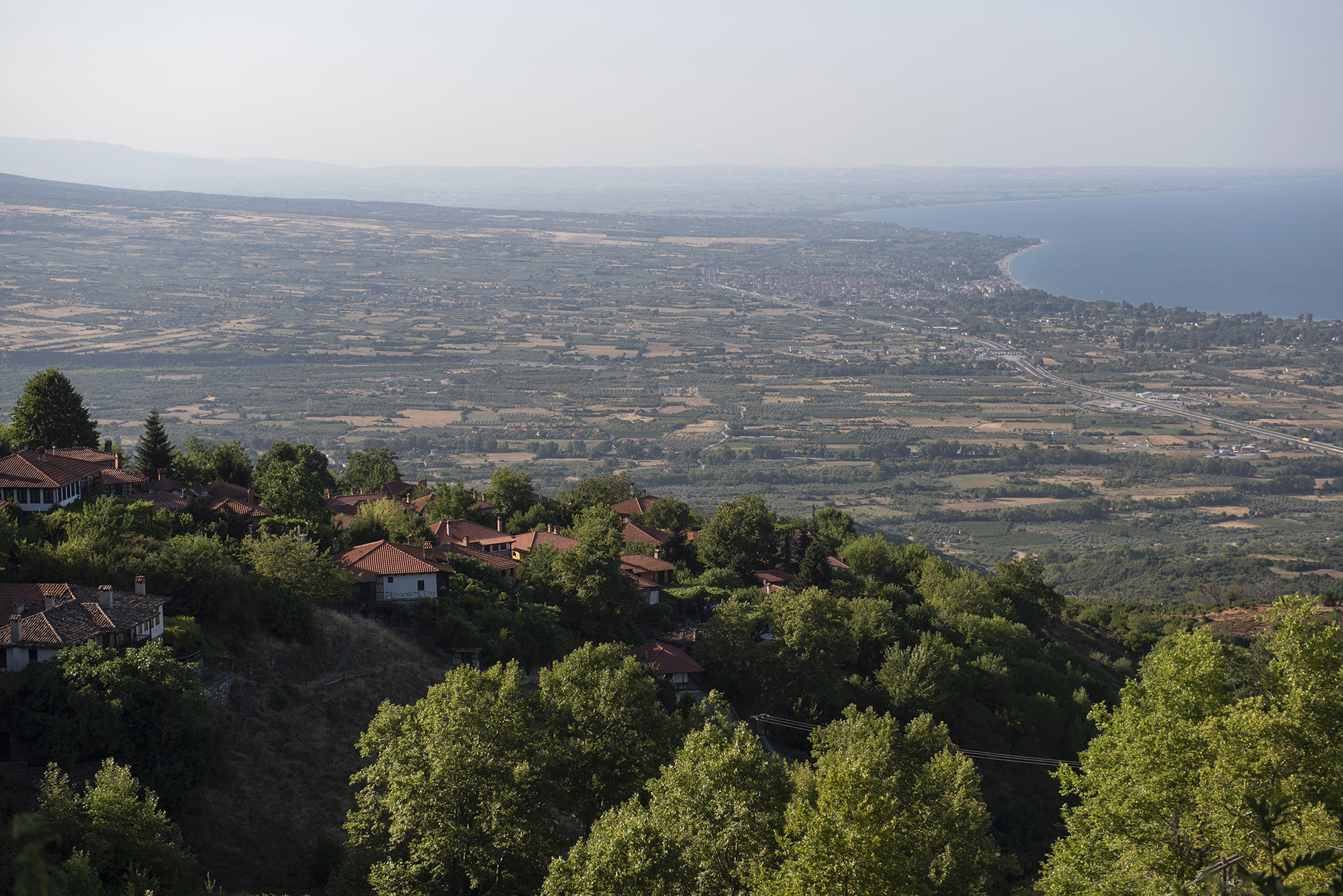Back in January, 1980, on a freezing night of heavy snowfall covering the slopes of Mount Olympus, the cobbled alleys of Paleos Panteleimonas were deserted, but a commotion of voices and singing from the old school at the nearby main square was loud, until it was all brought to an abrupt halt by the director’s order.
This mountain village, situated in a dense pine forest in the Pieria area, was chosen by the late filmmaker Theo Angelopoulos, a Palme d’Or winner renowned for an atmospheric cinematic method, as a filming location for his 1980 film “Alexander the Great”. The village, at an altitude of 450 metres on the eastern slopes of Mount Olympus, and just a few kilometres from the sea, has been chosen as a film location on a number of occasions.
It was deserted in the 1950s when residents decided to relocate to a more accessible location with milder weather, by the beach, establishing Neos (New) Panteleimonas.
The old traditional village may have been deemed a very suitable set for film productions but locals typically needed to endure harsh winters. Angelopoulos’ decision to choose this deserted village with stone houses and alleys as a location for his “Alexander the Great” film prompted a wider appreciation of the village’s beauty. Several years after the film’s release, an increasing number of people were interested in ascending the winding 4-km road running from the new seaside village to Paleos Panteleimonas. Old dilapidated stone houses were faithfully restored in accordance with specific building guidelines that preserved original architectural styles, along with yards, by the new arrivals.
In 1986, six years after the Angelopoulos film, the village was listed as a traditional settlement. As a result, entry into the village by car was forbidden for visitors. A large parking space was created at the village entrance, catering to the location’s increasing number of visitors. Guest houses, tavernas and cafes gradually emerged.
The village’s main cobbled leading to the square features shops selling traditional products. Consider the local honey as well as the tsipouro, made with wild strawberry-like arbutus unedo, producing a fragrant and mild spirit. Before reaching the square, look for the confectionary shop Fofo (Paleos Panteleimonas, Pieria, tel. +30 6977 314661). The little tables here offer a full view of Pieria and the sweets are fresh. Try the ekmek with ice cream; ravani cake; or walnut cake. The square, hosting the church and school buildings, is the village focal point. Tavernas situated under old and tall plane trees serve traditional dishes. We liked the rooster in red wine sauce and the ladera (casserole vegetables cooked in olive oil) at the Olympos taverna (Paleos Panteleimonas, Pieria, tel. +30 23520 22377) as well as the veal with eggplant and chops at T’Arhontiko (Paleos Panteleimonas, Pieria, tel. +30 23520 22603).
The area is also ideal for walks in the dense forest, dominated by chestnut and beech trees. Signposted trails from Paleos Panteleimonas lead to Palious Porous and Ano Skotina, two villages also listed as traditional settlements, while a path through the forest leads to an artificial lake, Kati, at an altitude of 1,340 metres. The village guest houses are well kept and affordable. The following are recommended: Pantheon Luxury Guesthouses (Paleos Panteleimonas, Pieria, tel. +30 23520 22717, www.pantheon-pieria.gr); Pliades Guesthouse (Paleos Panteleimonas, Pieria, tel. +30 23520 22661, www.pliades.gr); and Kastania Gi (Paleos Panteleimonas, Pieria, tel. +30 23520 22333, www.kastania-gi.gr).



